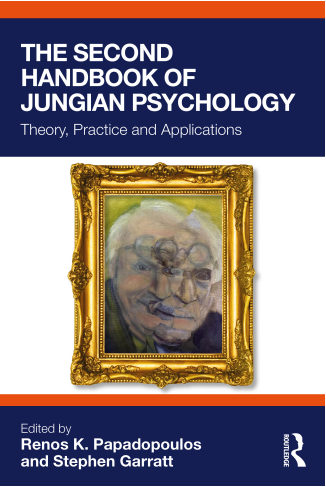The Second Handbook of Jungian Psychology, edited by Renos Papadopoulos and Stephen Garratt and scheduled for publication in Spring 2026, represents a landmark achievement in analytical psychology scholarship. This comprehensive volume demonstrates how Jung’s foundational insights continue to evolve through the work of leading contemporary minds, offering both theoretical extensions and innovative clinical applications while expanding Jungian thought into urgent contemporary concerns. Here is an outline of some of the chapters you can look forward to, although there are many other equally enticing contributions.
The theoretical section opens with Sonu Shamdasani’s reflection on Jung’s Liber Novus, examining its clinical and theoretical significance two years after publication. Shamdasani traces how Jung himself reflected upon this pivotal work and how it informed his turn to alchemy, with particular attention to the theme of opposites and their reconciliation—themes later developed in Mysterium Coniunctionis. His analysis reveals the continuing relevance of Jung’s most personal psychological work for contemporary analytical practice.
Renos Papadopoulos contributes one of the volume’s most provocative theoretical pieces with his investigation of Jung’s shadow concept. His analysis uncovers a fundamental paradox: despite Jung’s dramatic portrayals of the shadow as a grotesque and disorienting psychic force, he chose an ostensibly benign term to describe it. Papadopoulos traces the shadow’s conceptual evolution from early psychiatric uses to its central place in individuation theory, revealing how personified inner figures in the Red Book transformed it from psychological descriptor to indispensable part of the transformative process. Extending his exploration, he considers the shadow as a form of the Other, drawing on extensive research into Jung’s engagement with alterity and uncovering embedded colonial and racial biases within Jungian discourse. This investigation calls for critical reassessment of analytical psychology’s epistemological and ethical foundations.
Nancy Krieger returns to Jung’s original complex theory, positioning it within contemporary dissociation research and consciousness studies. Her chapter examines Jung’s early work with Bleuler and places it in the context of pioneering research being conducted at that time. Krieger demonstrates renewed interest in experiencing complexes as dissociative phenomena, firmly grounding them in the context of body and developing infant brain. Her work connects complexes as “splinter psyches” to diverse phenomena including trauma coping and consciousness investigation, relating these to major theories like Global Workspace and Integrated Information Theory.
The psychotherapy section showcases how Jung’s profound clinical insights find ever new and creative applications in contemporary practice. Mark Winborn addresses the fundamental but previously under-examined process of interpretation in Jungian analysis. His comprehensive treatment covers what one chooses to say in analysis, why one chooses it, how one says it, and when—the essential building blocks of interpretive process. Winborn explores the history of analytic interpretation, its role in addressing complexes and archetypal themes, and the poetic and metaphorical elements that make interpretation transformative rather than merely explanatory.
Karin Fleischer’s contribution on the body in analytical psychology represents a significant clinical development, addressing how the “corporeal turn” in human sciences has validated Jung’s early hypotheses about psyche-matter correspondence. Her work demonstrates how contemporary neuroscience and trauma theory support Jung’s century-old formulations about the psychoid unconscious and synchronicity. Fleischer focuses on Embodied Active Imagination, showing how including the somatic dimension creates access to pre-verbal, unrepresented experiences fundamental to working with developmental and complex trauma. Her clinical approach honors Jung’s assertion that “what the patient needs is an experience, not an explanation.”
Konstantin Roessler’s exploration of therapeutic work with dreams reveals remarkable compatibility between Jungian approaches and current academic dream research. His systematic presentation covers Jung’s understanding of dreams as connections between ego and the unconscious, encompassing both personal and collective levels. Roessler demonstrates how Jung’s dream theory aligns with contemporary discoveries about the continuum hypothesis of dreaming, the default mode network, and new understandings of consciousness, providing practical guidance for using dreams as central therapeutic tools.
The applications section demonstrates analytical psychology’s capacity to extend into contemporary concerns, showing how Jungian theory addresses urgent political, environmental, and social issues. Eckhard Frick’s examination of spirituality within Jungian frameworks explores Jung’s understanding of “Geistigkeit” as experiential quest involving encounter with the numinous archetype of spirit. His work addresses the integration of spirituality and psychology, distinguishing between institutional religious practices and deeper individualized spiritual experiences connected to individuation and the collective unconscious.
Emilija Kiehl’s chapter on social inequality represents a crucial development, challenging traditional boundaries between individual psychology and broader social contexts. Her work demonstrates how economic disparity significantly impacts mental health, drawing on James Hillman’s critique of psychotherapy’s insular focus on individual psyche while neglecting socioeconomic factors. Kiehl shows how neoliberalism has intensified money-based social hierarchies, leading to increased mental health issues in economically unequal societies, and calls for psychotherapy to engage directly with economic realities.
Stephen Garratt’s exploration of Jung and colonialism provides essential critical analysis, contextualizing Jung’s ideas within the colonial era and examining colonialism’s persistent psychological impact. His investigation moves from historical overview to contemporary decolonization movements, critiquing Jung’s concepts of the “primitive” and “other” as reflecting colonialist views. Crucially, Garratt calls for decolonization of Jungian theory while suggesting that analytical psychology has unique potential to engage with colonial legacies and contribute to transformative decolonization processes.
Marybeth Carter’s reframing of gender and sexuality concepts demonstrates how contemporary understanding has both challenged and expanded Jungian thought. Her exploration traces Jung’s conceptualization across his developmental arc, showing how post-Jungian critiques have opened and expanded understanding of the psyche while remaining faithful to the Jungian paradigm of self-emergence. This work addresses urgent contemporary concerns about identity and expression within analytical psychology.
Greg Singh’s media analysis offers three provocations that extend Jungian insights into contemporary digital culture: archetypes are not located on screens, cinema does not end at screens, and films’ work continues beyond viewing. His post-Jungian approach to film theory emphasizes co-creative, affective, and transformative potential of media encounters, demonstrating analytical psychology’s relevance to understanding contemporary cultural phenomena.
The Second Handbook of Jungian Psychology represents analytical psychology at its most mature and engaged. By combining rigorous theoretical extension, innovative clinical applications, and bold expansion into contemporary concerns, it demonstrates the field’s continued vitality and relevance. The volume shows how leading minds in analytical psychology are simultaneously deepening Jung’s foundational insights and extending them into urgent twenty-first-century challenges, positioning the field for continued evolution and impact.

